New perspectives on past and present of former camp
Through its grant program, the IHRA seeks to increase the capacity of governments and non-governmental institutions to safeguard the record of the Holocaust and the genocide of the Roma.
Tomislav Dulic is a Swedish historian and Senior Lecturer in Holocaust and Genocide Studies at Uppsala University. He specializes in memory culture and the social dynamics of violence. In preparation for the upcoming conference Jasenovac Past and Present: History and Memory of Institutionalized Destruction (co-funded by the IHRA), we spoke to him about his views on the significance of the site, its place in memory, and the latest developments in the research.
The Jasenovac site in Croatia consisted of five detention facilities established between August 1941 and February 1942 by the authorities of the so-called Independent State of Croatia. Among the victims were Jews, Serbs, Roma and political opponents. If you would like to know more about Jasenovac and the Holocaust in Croatia, you can find more information in the United States Holocaust Memorial Museum’s Holocaust Encyclopedia.
When did your interest in Jasenovac begin?
My interest in Jasenovac first began many years ago. The site has for decades been a very contentious topic in the political and public spheres, but over the last ten years less so in the academic field. It is a symbolically important site, and Jasenovac always comes up in discussions about the Holocaust in the former Yugoslavia.
What is so contentious about the case of Jasenovac?
The numbers. The number of victims who were murdered at Jasenovac continues to be the main point of contention. However, among experts, a consensus concerning these numbers has existed for quite a few years. This consensus just hasn’t reached the general public. And so, there is a misconception that there is a conflict about these numbers. But simply put, there isn’t – at least not among experts who have actually done primary research on the topic.
In other words, there is a disconnect between the public discourse on the one side and the academic discussions on the other. In the public discourse, we see the existence of highly conflicting narratives. Therefore, the challenge remains to agree on the basics in order to have a conversation about interpretations. That’s why we need to reach out to the public in order to move beyond these issues.
Where do these differing narratives stem from?
After World War II, there was a misunderstanding among politicians in Yugoslavia, which inflated the number of victims. With the breakup of Yugoslavia, extreme positions were taken. Only the past 10-15 years have brought a gradual shift. I see this shift as part of the renewed interest in the Holocaust, and a great step forward has been taken with more systematic analyses. Examining the details of the history of Jasenovac has revealed that the differences in narratives are not that great, as I mentioned before.
Traditional research on Jasenovac had a rather descriptive character, which although providing important facts about death tolls and the basic character of the camp lacked in analytical depth. As of the last decade and a half, we are seeing an increasing number of theory-driven analyses focusing on the social and psychological dynamics of violent interaction in the camp, but also on collective memory. I think this is a positive development, which paves the way for a new generation of scholars to address previously under-researched topics.
Do you think that the general public is interested in a site such as Jasenovac and its history?
There is definitely an interest in Jasenovac among the general public, yes. In fact, this question is a major research interest of mine. Now, the academic discourse is not something that a majority of the public reads. They don’t see the collaboration that takes place between local and international scholars and experts.
Instead, most people see Jasenovac through the prisms of the national media. Non-experts are often allowed to comment when the topic comes up, and the dominance of the national perspective is particularly obvious in online comments sections. We also see this in the field of education. This is part of the motivation behind the conference: We want to internationalize the research on Jasenovac and move beyond a narrow national perspective.
What role has the IHRA played in the organization of the Jasenovac conference?
The IHRA has a key role as facilitator of a fact-based academic discussion on Jasenovac. Also, the IHRA takes an active role in awareness-raising on the political level, encouraging dialogue about a highly contentious topic that continues to affect both politics and society in Croatia and Serbia. The fact that the French, German, and Swedish embassies are supporting the events in Belgrade and Zagreb testifies to the political interest in Jasenovac and its legacy. And last but not least, the IHRA is the main financial contributor to the conference.
Finally, if you were to point to one thing that you would like to add to the public’s knowledge, understanding, or memory of the history of Jasenovac, what would that be?
I would say the nature of the Ustaša regime. The Ustašas initiated the persecution of Jews quite independently from any real pressure from Germany. Racial laws were adopted within a fortnight of the establishment of the state on 10 April 1941, which was followed by the nationalization of property and establishment of a camp system a short time thereafter.
The Ustašas themselves murdered the vast majority of the Jews in the Independent State of Croatia and initiated the Holocaust at a very early stage. And the Jasenovac camp was key in this process, established and run by the Ustašas themselves with little German meddling. I think this is important, as it is a rather unique case among those countries that were recognized by Nazi Germany as independent and sovereign states.
Jasenovac Past and Present: History and Memory of Institutionalized Destruction is organized by a consortium consisting of the Hugo Valentin Centre at Uppsala University, Mémorial de la Shoah, Topographie des Terrors, the Departments of History at Belgrade and Zagreb universities and the Jasenovac Memorial Site.
Sign up to our newsletter to
receive the latest updates
By signing up to the IHRA newsletter, you agree to our Privacy Policy

